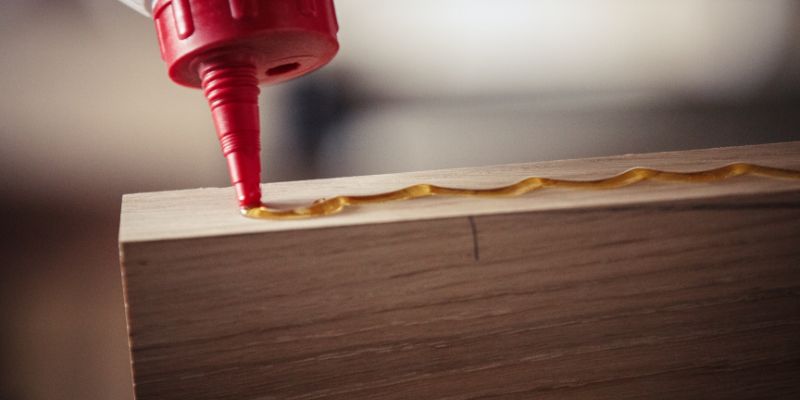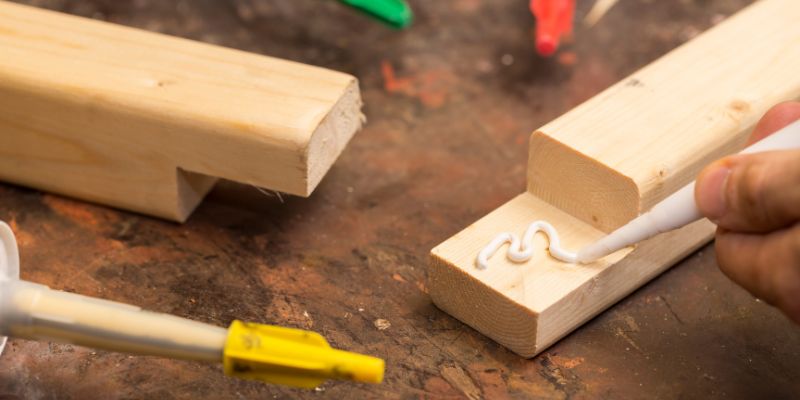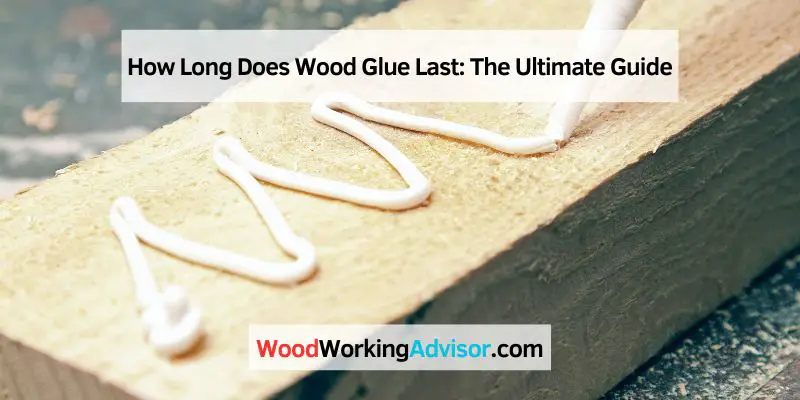Wood glue can last for many years if it is stored properly and used within its expiration date. The shelf life of wood glue typically ranges from one to two years, but this can vary depending on the brand and the specific type of wood glue being used.
It is important to check the packaging or label of the wood glue for the exact expiration date. By ensuring proper storage and adhering to the expiration date, you can maximize the lifespan of your wood glue and ensure its effectiveness when bonding wood pieces together.
Remember to keep your wood glue in a cool and dry place, away from extreme temperatures or moisture.
Understanding Wood Glue
Wood glue is an essential adhesive for carpenters and woodworkers, used to bond pieces of wood together for various projects. Whether you’re constructing furniture, repairing broken items, or engaging in DIY crafts, using the right wood glue is crucial for achieving strong and durable bonds. In this blog post, we’ll delve into the different types of wood glue and how they work, with a focus on answering the question:
Types Of Wood Glue
Wood glues are available in several different types, each with its own set of characteristics and recommended uses. Understanding these types can help you select the most suitable wood glue for your project’s requirements:
- PVA Glue: also known as “white glue” or “carpenter’s glue,” PVA glue is the most common type of wood glue. It is water-based, easy to clean up, and typically dries clear. PVA glue provides a strong bond and works well for general woodworking projects.
- Polyurethane Glue: this type of glue expands as it cures, filling gaps and providing high-strength bonds. Polyurethane glue is suitable for projects that require strong adhesive properties, such as laminating and joining different types of wood. Additionally, it is resistant to moisture and can be used both indoors and outdoors.
- Hide Glue: also known as “animal glue,” hide glue is derived from collagen proteins found in animal hides and bones. Traditionally used in woodworking, hide glue offers excellent initial tack and reversibility, making it ideal for antique restoration and instrument making. However, it requires heating for application and has a shorter shelf life compared to other types of wood glue.
How Wood Glue Works
Wood glue works by creating a chemical bond between the individual wood fibers, effectively joining them together. When wood glue is applied to a surface, it penetrates the wood fibers and then undergoes a curing process, which forms a strong and durable bond once it dries.
The key to successful wood glue application is proper surface preparation. The wood surfaces being glued should be clean, dry, and free from any dirt, oil, or previous finishes. This ensures optimal adhesion and a long-lasting bond.
Additionally, clamping the glued pieces together with consistent pressure during the drying period is essential. This helps achieve maximum contact between the wood surfaces, enhancing the strength of the bond.
It’s important to note that the drying time and strength of the bond can vary depending on the type of wood glue used. Following the manufacturer’s instructions regarding application, clamping, and drying times is crucial for achieving the best results.

Factors Affecting Wood Glue Longevity
The longevity of wood glue depends on several factors, including application technique, environmental conditions, and the type of wood being bonded. Proper storage, moisture levels, and temperature also play vital roles in determining how long the wood glue will last, ensuring strong and durable bonds for years to come.
Wood glue is a versatile adhesive that is used in various woodworking projects. However, its longevity can be influenced by several factors. Understanding these factors can help you ensure that the wood glue you use remains strong and durable over time. In this section, we will discuss the key factors that affect wood glue longevity, including environmental conditions and application techniques.
Environmental Conditions
The environment in which wood glue is used plays a significant role in its longevity. Certain conditions can either enhance or degrade the adhesive properties of the glue. Here are some environmental factors to consider:
1. Temperature: Extreme temperatures can affect the performance of wood glue. Excessive heat can cause the glue to weaken and deteriorate, while extremely cold temperatures can slow down the curing process. It is essential to store and use wood glue in temperatures recommended by the manufacturer.
2. Humidity: Moisture can impact the longevity of wood glue. High humidity levels can lead to increased wood expansion and contraction, which can weaken the bond over time. Similarly, low humidity levels can cause the wood to dry out, affecting the adhesive strength. Maintaining a moderate humidity level is crucial for optimal wood glue performance.
3. UV Exposure: Ultraviolet (UV) radiation can be damaging to wood glue. Prolonged exposure to sunlight can cause the glue to degrade and weaken. If your woodworking project is exposed to direct sunlight, it is recommended to choose a wood glue that is UV resistant or to protect the glued area with a finish or paint.
Application Technique
Apart from environmental conditions, the way you apply wood glue can also impact its longevity. Proper application technique ensures a strong bond that can withstand the test of time. Consider the following tips:
1. Surface Preparation: Properly preparing the wood surface ensures better adhesion. Smooth and clean surfaces provide maximum contact area for the glue to bond effectively. Remove any dust, debris, or previous finishes from the wood before applying the glue.
2. Clamping Pressure: Applying even and adequate pressure during clamping is crucial for a strong bond. Insufficient pressure can result in weak joints, while excessive pressure can squeeze out too much glue, resulting in weak bonds. Refer to the manufacturer’s instructions for recommended clamping pressure and duration.
3. Drying Time: Allowing sufficient drying time is important for the glue to cure properly. Rushing the drying process can lead to weak bonds and compromised longevity. Follow the manufacturer’s recommended drying time before subjecting the glued joint to stress or load.
In conclusion, the longevity of wood glue depends on various factors, including environmental conditions and application techniques. By understanding and considering these factors, you can ensure that your woodworking projects are sturdy and long-lasting. Remember to choose the right glue for the specific conditions and follow proper application techniques to achieve the best results.
Signs Of Deteriorating Wood Glue
Visual Inspection
Sometimes, it can be challenging to determine if wood glue has gone bad simply by looking at it. However, there are a few key signs to watch out for. Cracks or fractures in the glue, yellowing or discoloration, and clumping are all indications that the glue may be past its prime. Additionally, if the glue feels tacky or sticky to the touch, it could mean that the adhesive properties have deteriorated.
Testing For Strength
Conducting a strength test can help determine if the wood glue is still effective. To do this, apply the glue to scrap pieces of wood and allow it to set for the recommended drying time. Then, try to separate the pieces with force. If the bond fails easily or shows signs of weakness, it’s likely that the glue has deteriorated and is no longer reliable for strong adhesion.
Extending The Lifespan Of Wood Glue
Wood glue can last for several years when stored properly in an airtight container. To extend its lifespan, ensure the bottle is tightly sealed after each use and store it in a cool, dry place.
Proper Storage
Proper storage is crucial in extending the lifespan of wood glue. Storing wood glue in the right conditions not only prevents it from drying out too quickly but also maintains its adhesive properties for longer. Here are some essential storage tips to follow:
- Keep it Sealed: Always ensure the wood glue container is properly sealed after use to prevent air exposure.
- Store in a Cool, Dry Place: Extreme temperatures and humidity can affect the quality of wood glue. Make sure to store it in a cool, dry place away from direct sunlight or heat sources.
- Avoid Freezing: Wood glue should not be exposed to freezing temperatures, as it can cause changes to its chemical composition and make it less effective.
Maintenance Practices
Maintaining wood glue properly is essential for prolonging its lifespan and preserving its adhesive strength. Here are some maintenance practices to consider:
- Regularly Inspect and Replace: Before beginning a woodworking project, inspect the wood glue for any signs of deterioration or expired shelf life. If the glue appears chunky, discolored or has an off-smell, it’s time to replace it.
- Keep the Applicator Clean: Clean the glue applicator tip after each use to prevent dried glue from blocking the opening. This ensures a smooth and even application in the future.
- Avoid Contamination: Always use clean tools and surfaces when working with wood glue. Contaminants like dust, oil, or debris can compromise the effectiveness of the glue.
Replacing Old Wood Glue
Wood glue is a highly effective adhesive used in woodworking projects. Over time, however, the glue may start to deteriorate and lose its bonding strength.
When To Replace
If you notice that your woodworking joints are coming apart or the bond is weakening, it may be time to replace the old wood glue. Checking for the following signs will help you determine when to replace:
- Visible cracks or gaps in the bond
- Weak or loose joints
- Difficulty in reactivating the bond with moisture
- Wood pieces separating with minimal force
- Lack of adhesive strength compared to previous projects
How To Remove Old Glue
Before applying new wood glue, it is important to remove any remnants of the old glue. Here are some methods to effectively remove old wood glue:
- Scraping: Use a putty knife or scraper to carefully scrape away the excess glue from the surface. Be gentle to avoid damaging the wood.
- Sanding: Sanding the area can help remove any stubborn glue residue. Use fine-grit sandpaper and sand in the direction of the wood grain.
- Soaking: If the glue is still stubborn, try soaking the joint or area in warm water. This can soften the glue, making it easier to scrape away.
- Chemical solvents: As a last resort, you can use chemical solvents specifically designed for removing wood glue. Follow the manufacturer’s instructions and exercise caution when using these products.
Conclusion
Knowing when to replace old wood glue is essential for maintaining the integrity and strength of your woodworking projects. Regularly inspecting the glue bond and replacing it when necessary will ensure long-lasting and reliable results.

Frequently Asked Questions For How Long Does Wood Glue Last
How Permanent Is Wood Glue?
Wood glue forms a strong, permanent bond between wood surfaces. It is durable and long-lasting, providing a solid and secure hold.
Does Wood Glue Fail Over Time?
Yes, wood glue can fail over time due to factors like exposure to moisture, temperature fluctuations, and improper application. It is essential to store and use wood glue according to the manufacturer’s instructions to ensure its longevity and effectiveness in bonding wood materials.
Does Wood Glue Lose Its Strength?
Yes, wood glue can lose its strength over time. Factors like exposure to heat, moisture, or excessive weight can weaken the bond. Regular inspection and maintenance can help ensure the glue remains effective for a longer period.
How Do I Know If My Wood Glue Is Bad?
To determine if your wood glue is bad, look for signs such as a thickened or lumpy texture, a foul odor, or if it doesn’t dry properly. It’s also important to check the expiration date and storage conditions as these can affect the glue’s efficacy.
Conclusion
Understanding the shelf life of wood glue is essential for successful woodworking projects. By being aware of its storage and usage guidelines, you can ensure optimal performance and longevity. Utilizing high-quality wood glue and adhering to proper storage practices can significantly extend its lifespan, allowing you to create durable and long-lasting woodworking masterpieces.


